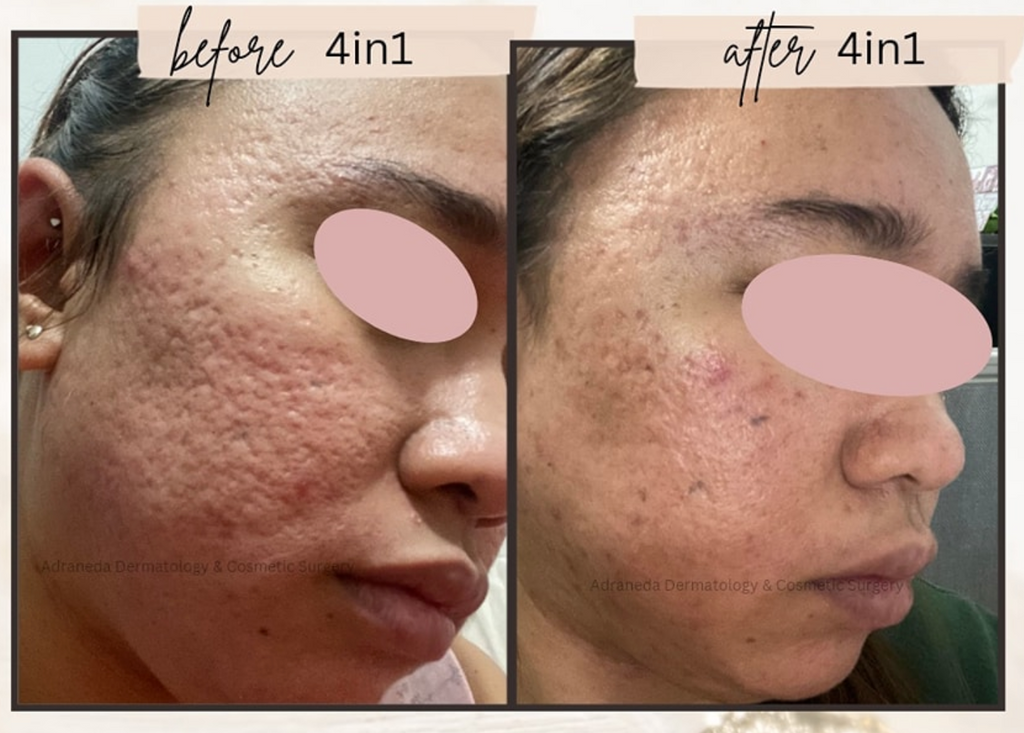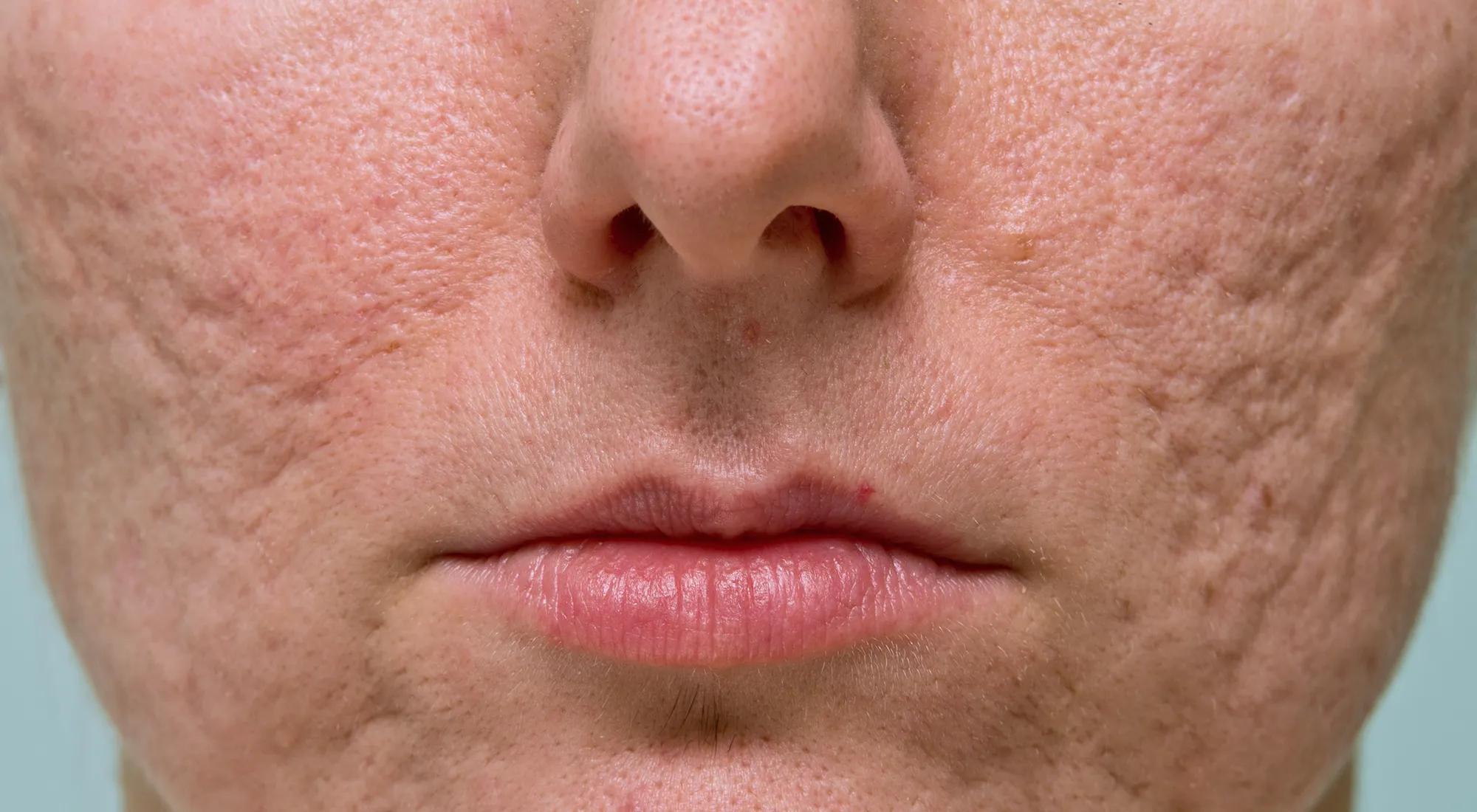Accomplish Smooth Skin with Specialized Acne and Acne Scars Treatment
Accomplish Smooth Skin with Specialized Acne and Acne Scars Treatment
Blog Article
Understanding the Various Skin Conditions and Effective Treatment Choices for Acne Scars
Acne scars represent a complicated interaction of skin problem that substantially influence individuals' self-confidence and general skin health and wellness. Comprehending the unique kinds of acne scars-- atrophic and hypertrophic-- together with their underlying causes, is critical for identifying efficient treatment strategies. Various healing alternatives exist, varying from sophisticated dermatological procedures to all-natural solutions. Nonetheless, the effectiveness of these treatments frequently rests on personalized assessments by qualified professionals. As we discover the landscape of acne scar management, it ends up being evident that the trip towards more clear skin may include more than just topical solutions.
Kinds of Acne Scars
The 2 key categories of acne marks are hypertrophic and atrophic scars. These scars are additional classified into 3 subtypes: ice choice scars, which are deep and narrow; boxcar marks, which are wider and have well-defined sides; and rolling marks, which create a wave-like appearance due to unequal skin appearance.
In contrast, hypertrophic scars arise from an overflow of collagen throughout the healing process, bring about raised areas on the skin. These marks are frequently solid and can differ in shade, sometimes appearing red or darker than the surrounding skin.

Reasons of Acne Scarring
Scarring occurs as an outcome of the body's all-natural healing response to swelling and injury created by acne lesions. When acne forms, it causes an inflammatory feedback, causing the release of various cytokines and development elements that advertise recovery. However, this procedure can often result in excessive cells formation or poor fixing, causing marks.
The primary reasons of acne scarring consist of the extent of the acne itself, duration of the sores, and individual skin kinds. Severe inflammatory acne, such as cysts and nodules, is more probable to lead to scarring due to deeper cells damage. In addition, improper handling of acne sores, such as picking or squeezing, can worsen cells injury and inflammation, raising the likelihood of scarring.
Hereditary proneness also plays a substantial role; individuals with a family members history of scarring are at a greater threat. Skin kind and shade can affect scar formation, as darker skin tones may experience post-inflammatory hyperpigmentation, while lighter skin might create atrophic marks.

Treatment Options for Scarring
Effective treatment options for acne scarring differ relying on the kind and extent of the marks. Usually classified right into atrophic, hypertrophic, and keloid scars, these conditions require tailored approaches for optimum outcomes.
For atrophic marks, which are defined by a loss of tissue, treatments such as chemical peels, microdermabrasion, and laser therapy are commonly used. These approaches advertise skin renewal and stimulate collagen manufacturing, therefore boosting skin structure. Subcision, a minimally invasive treatment, can additionally work by damaging up fibrous bands beneath the skin.
Hypertrophic and keloid marks can be a lot more challenging to deal with. Alternatives consist of corticosteroid injections to reduce swelling and squash the scars. acne and acne scars treatment. In many cases, cryotherapy or laser therapy may be recommended to decrease their appearance
Surgical options are readily available for serious scarring, where excision or skin grafting may be essential. It's crucial for individuals to talk to a dermatologist to examine their particular scar kind and discuss one of the most appropriate therapy plan. Incorporating several treatments commonly yields the ideal results, ensuring that each person's distinct skin disease is dealt with effectively.
Home Treatments and Natural Solutions
All-natural remedies and natural remedy can offer an available approach for individuals seeking to boost the appearance of acne scars. Numerous ingredients discovered in the home cooking area have shown possible benefits in improving skin appearance and promoting healing.
Using fresh aloe vera gel directly onto the marks can help improve skin hydration and decrease inflammation. Honey has all-natural anti-bacterial and moisturizing top qualities that can assist in mark recovery.
An additional reliable alternative is lemon juice, which works as an all-natural exfoliant and can lighten hyperpigmentation. Nonetheless, it needs to be made use of cautiously, as it might create photosensitivity. Oatmeal masks are also useful; their gentle exfoliation can aid get rid of dead skin cells while comforting irritability.
Necessary oils, such as tea tree oil and lavender oil, can additionally support scar recovery as a result of their antimicrobial buildings. It is critical to execute a spot test prior to using any type of remedy to make certain there are no damaging reactions. These natural remedies can be a corresponding method in the journey to lessen acne scars.
Preventing Future Scarring
Taking on a positive strategy to skincare can dramatically decrease the danger of developing future acne scars. Normal cleansing, exfoliation, and hydration can aid maintain skin recommended you read health and wellness and prevent blocked pores.
In addition, avoiding the temptation to squeeze or choose acne sores is essential, as this can cause swelling and subsequent scarring. Rather, people should concentrate on using topical treatments that promote healing and minimize swelling. Ingredients such as salicylic acid, benzoyl peroxide, and retinoids are understood for their effectiveness in taking care of acne and minimizing scars.

Finally, keeping a healthy diet plan rich in antioxidants and remaining moisturized supports skin regeneration. By carrying out these preventive steps, people can dramatically lower their check my blog risk of future scarring and promote general skin wellness.
Conclusion
To conclude, a detailed understanding of acne marks, encompassing both atrophic and hypertrophic types, is vital for efficient therapy methods. Customized treatments, consisting of specialist therapies and home solutions, can significantly improve skin appearance and texture. Safety nets also play an important function in reducing future scarring. Examination with a skin specialist stays necessary to design tailored techniques that think about private skin types and scar extent, inevitably boosting the effectiveness of scar management techniques.
Acne marks represent an intricate Full Report interplay of skin conditions that substantially effect people' self-esteem and general skin health. The 2 main categories of acne scars are atrophic and hypertrophic marks. These marks are more categorized into 3 subtypes: ice choice marks, which are narrow and deep; boxcar scars, which are larger and have well-defined edges; and rolling scars, which create a wave-like appearance due to irregular skin appearance.
A thorough consultation with a dermatologist can assist establish the most proper treatment, taking right into account the individual's skin type, mark severity, and overall skin wellness.
Appointment with a skin specialist continues to be imperative to devise tailored approaches that consider private skin types and mark seriousness, ultimately enhancing the efficacy of mark administration techniques.
Report this page